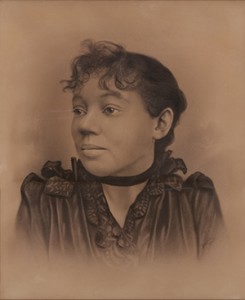Elizabeth Carter Brooks facts for kids
Quick facts for kids
Elizabeth Carter Brooks
|
|
|---|---|
 |
|
| Born |
Elizabeth Carter
1867 New Bedford, Massachusetts, United States
|
| Died | 1951 New Bedford, Massachusetts
|
| Citizenship | United States |
| Alma mater | Harringon Normal School for Teachers |
Elizabeth Carter Brooks (1867-1951) was an American teacher, a person who worked for social change, and an architect. She loved helping other African Americans succeed. She also understood how important it was to save historical buildings in the United States. Brooks was special because she was one of the few Black women of her time who was both an architect and someone who supported important projects.
Contents
Her Early Life and Education

Elizabeth Carter Brooks was born in New Bedford, Massachusetts. This city was known for helping former slaves. It offered them a safe place, education, and jobs. Her mother, Martha Webb, had been a slave owned by President John Tyler. Martha Webb also helped people escape slavery through the Underground Railroad. Elizabeth grew up with a strong desire for fairness and equality. This passion stayed with her throughout her life.
Elizabeth went to New Bedford High School. Then, she studied at the Swain Free School. There, she learned important skills in design and architecture. After that, she became the first African American person to graduate from the Harrington Normal School for Teachers.
Helping Others Through Teaching and Activism
Elizabeth Brooks started her teaching career in the early 1890s. She taught at Howard's Orphan Home in Brooklyn. This home, also known as the Howard Colored Orphan Asylum, was started and run by African Americans.
Working for Women's Rights
In 1895, Brooks began working with the National Association of Colored Women's Clubs (NACWC). This group worked to improve the lives of African American women and their communities. She became the secretary of the NACWC in 1896. Later, she was vice-president from 1906 to 1908. She then served as president of the NACWC from 1908 until 1912.
Brooks also joined the National Association for the Advancement of Colored People (NAACP) soon after it began. The NAACP works for civil rights and justice for African Americans. She later started her own NAACP chapter in New Bedford. In 1948, she was honored as a president emeritus of the New Bedford NAACP. This means she was recognized for her long and important service.
Leading Community Efforts
Brooks was one of the people who started the New England Federation of Women's Clubs. This group later became the Northeastern Federation of Colored Women's Clubs. She was president of this federation for more than 27 years. During her time as president, the club helped create many important services. These included community centers, scholarship funds for students, and day care centers. These services were very much needed by the community.
In 1897, Brooks helped open the New Bedford Home for the Aged. This home provided a place for older people to live. At first, it moved to several temporary places. Brooks even paid the rent for the home herself for the first six months. After that, another group called the Women's Loyal Union took over the responsibility of running the home.
Brooks later designed the permanent home for the aged. It was built in the Colonial style at 396 Middle Street. The Women's Loyal Union, which Brooks was also part of, continued to support the home at its new location. Brooks became the first president of the home and of the Women's Loyal Union. She stayed in these roles until 1930. The building is still standing in New Bedford today. It is two and a half stories tall with a hip roof, six dormer windows, and a front porch with a flat roof.
Return to Teaching
In 1901, Brooks started teaching again. This time, she taught at the Taylor School. She made history there by becoming the first African American teacher in New Bedford.
In 1918, she was asked to help with a special project. The War Council of the National board of the YWCA (Young Women's Christian Association) asked her to supervise the building of the Phillis Wheatley YWCA in Washington, D.C.
Later Life and Legacy
Elizabeth Brooks retired from teaching in 1929. That same year, she married W. Sampson Brooks. He was a bishop in the African Methodist Episcopal denomination of the Bethel Church. She and her husband moved to San Antonio, Texas. They lived there together until her husband passed away in 1934. After his death, she moved back to New Bedford.
In 1939, she began an important new project: preserving Black heritage. Brooks believed that "monuments to 'race history'" were a vital part of African American culture. She felt they needed to be saved. She bought the home of William H. Carney and turned it into a memorial. William H. Carney was a brave soldier who fought in the Civil War.
Elizabeth Carter Brooks passed away in 1951. In 1957, the city of New Bedford honored her by naming a school after her. This was a way to remember her many contributions to education, activism, and preserving history.
See also
 In Spanish: Elizabeth Carter Brooks para niños
In Spanish: Elizabeth Carter Brooks para niños

